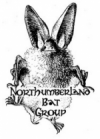On the 16th September 2022 NBG received an email via the bat group website, asking if we could provide a sample of bat hair. The email read:
I appreciate that this is a very unusual email! I’m a PhD student working in the University of Leeds department of chemistry, and I’m particularly interested in how crystals form on various surfaces. A colleague recently sent me an image of a bat’s hair under a microscope, and I was fascinated. The structure of the hair is completely different to the hair of any other mammal I’ve ever seen.
If there’s any way you would be able to send me a very small amount of bat’s hair for me to try growing crystals on, I would really appreciate it! In return, I would be very happy to take some images in our ultra-high magnification electron microscope for you to use. In my experience, these images are really striking for outreach purposes.
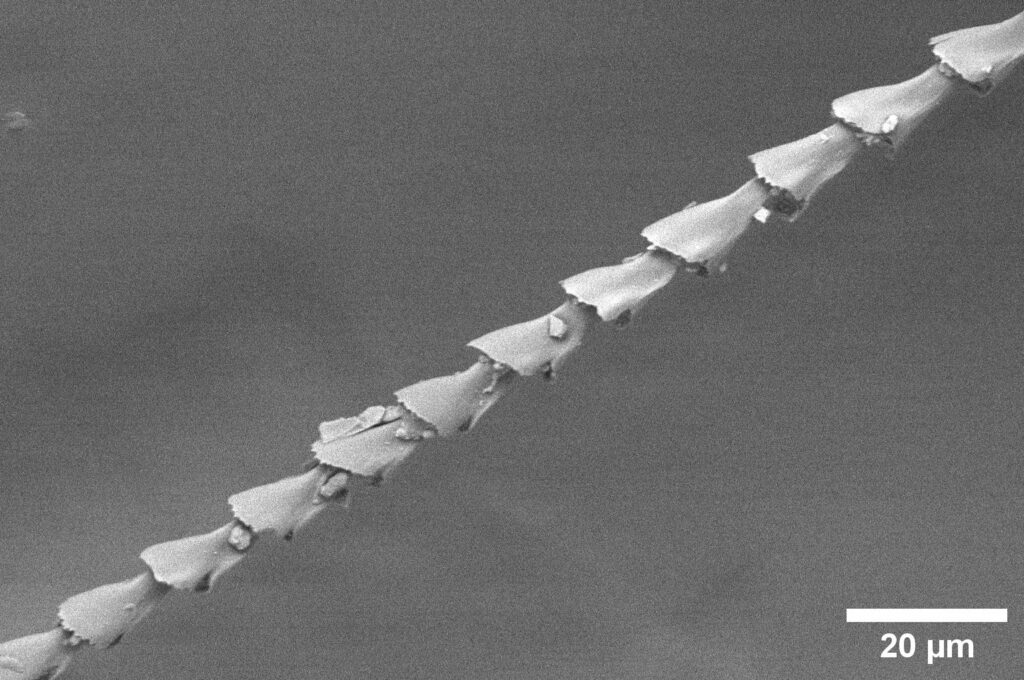
How could I (the email monitor) refuse such an interesting request? So, I duly snipped a very small sample of hair from a bat that I had had in care and which had recently died (cat attack). With the tiny tuft of heir sealed in a small zip lock sample bag, it was sent off with a note requesting some of the images once scanned… and not to use for any nefarious spells or potions as Halloween is approaching!
A few weeks later, I received an email from Thomas with some pictures attached. The electron microscope clearly shows that the bat hair is very different from dog hair, dog hair being more representative of most mammals, even human hair. But why is bat hair so different?
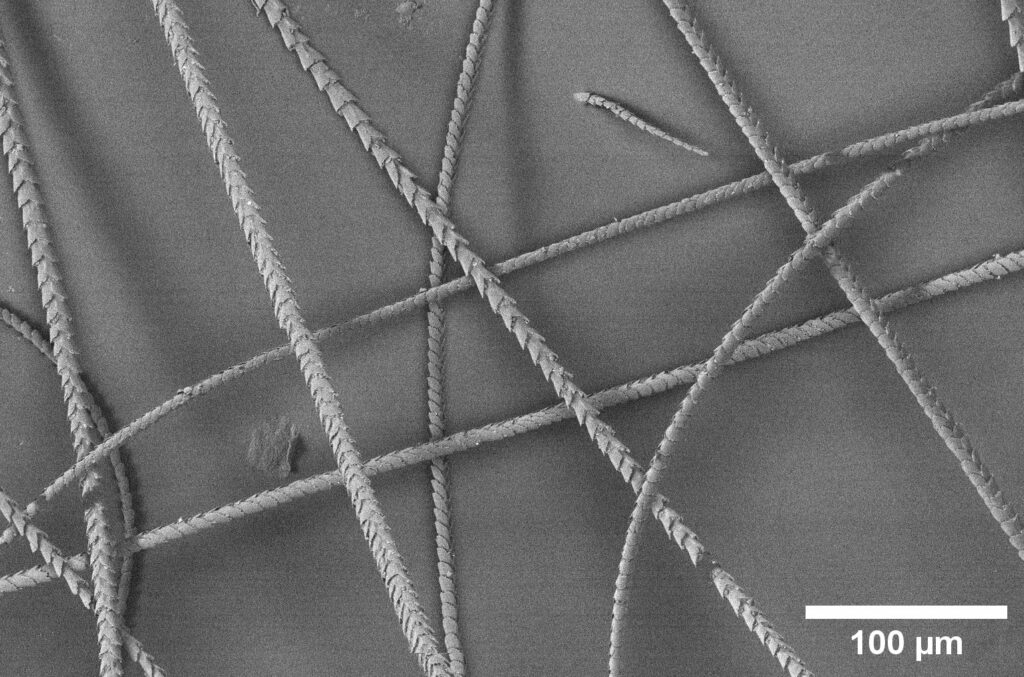
Since receiving the photographs, my interest has been peaked, so I have been doing some research. Meyer (1985) hypothesized that variation in bat hair morphology may create a layer of turbulence around the animal, facilitating flight. Bats are the only mammal group capable of powered flight, so it is possible that this is one of the reasons that they have this unique fur structure.
Another theory is that as each hair shaft has an outer cuticle mate up of overlapping scales or plates, the plates may prevent the hairs from matting together. Since bats often roost in groups and brush past each other, preventing the hair from matting may be beneficial, as it would reduce the need for grooming, and retain insulation value.
Also not all bat hairs are the same – body hairs, whiskers and wing membrane hairs have very different uses. Some published studies have shown that the wing membrane of the big brown bat Eptesicus fuscus is covered by a sparse grid of microscopic hairs. These hairs act as tactile receptors, when removed they decrease the maneuverability of the bat in flight (I hope they grew back after the experiment!).
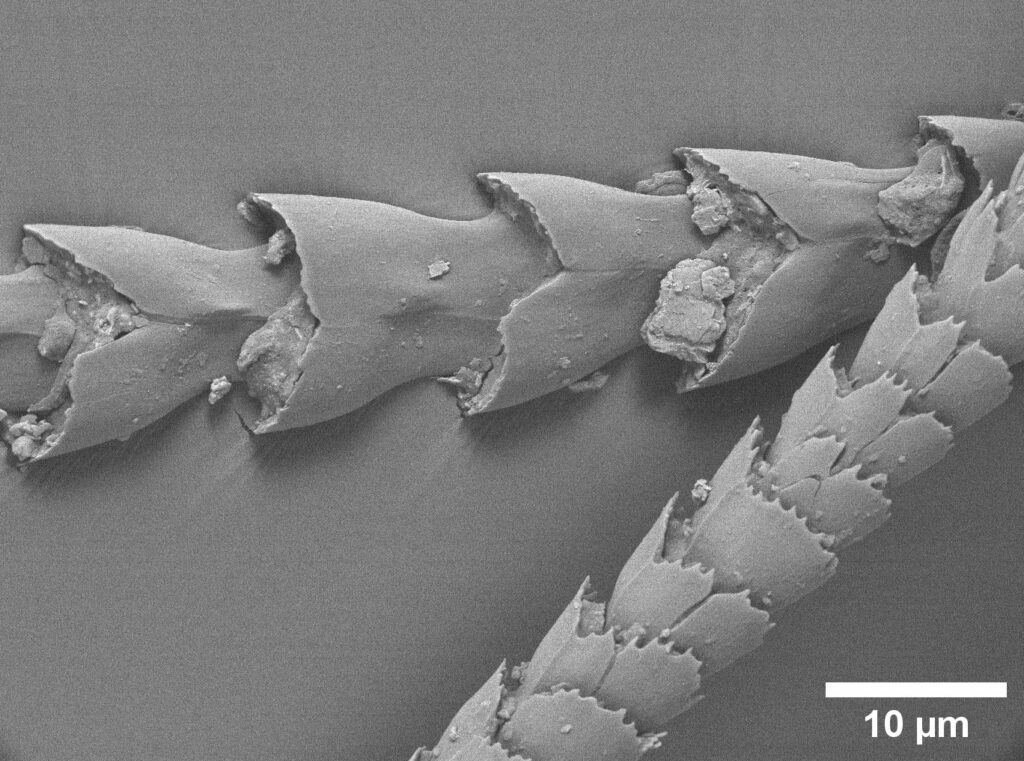
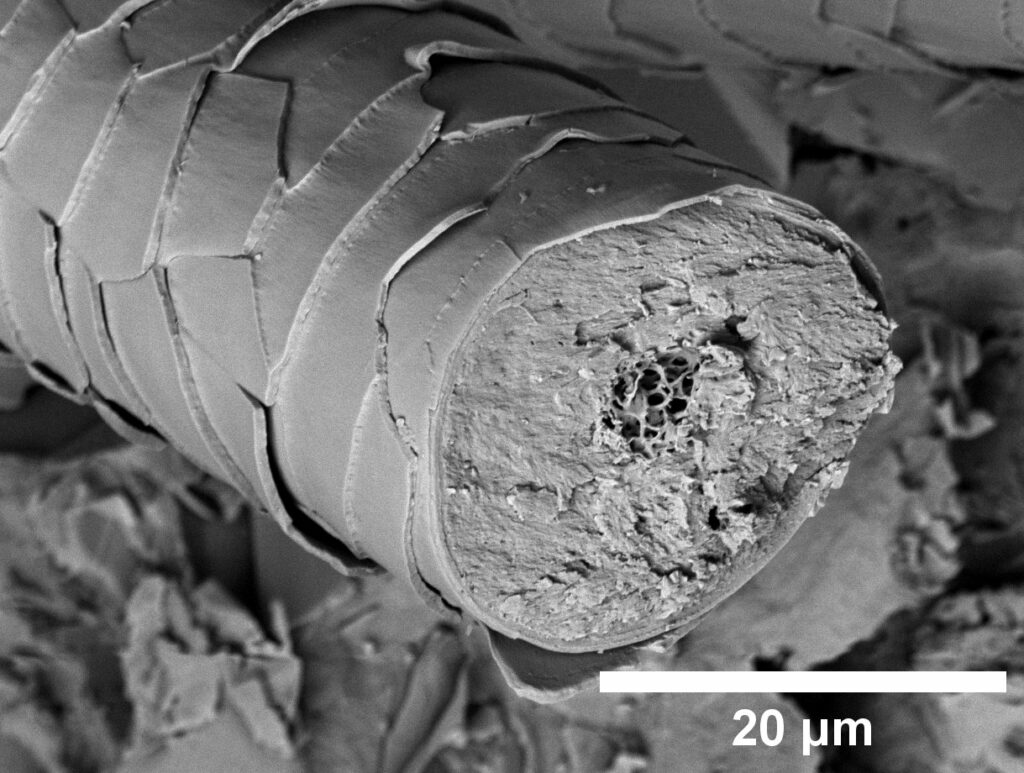
Finally, there is quite a bit of variation in the structure of the hair between bat species. A number of studies have been undertaken in order to work out if heir structure (plate shape) can be used to identify bats to species level. Always interesting to note that evolution has yet again solved a problem with multiple variations.
So, it looks like we still have a lot to learn about bat fur, not to mention many other aspects of these fascinating creatures. If anyone has any ideas for why bat fur may have evolved differently, or has evidence to back up the hypotheses discussed above, do post in the comments section below.
NBG would also like to say a big thank you to Thomas for providing the photographs and we hope his PhD goes well too!
Share this post!
